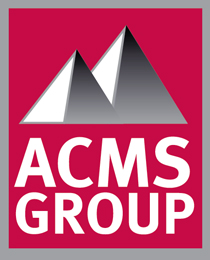So you want to start an industrial project, huh? Great! Deciding to start is the first step. But what will you do first and where will you go from there? Business owners have a lot to remember, so, as with all things, you must have an industrial project management plan!
An industrial project management plan can include a wide array of components. But, for purposes of this post, we have scaled it down to the top 5.
- Scope Statement
- Critical Success Factors
- Deliverables
- Work Breakdown Schedule
- Budget
Scope Statement
With the scope statement, you need to define what you want to do, how far you want to go, and what you will need to get there. You should think about the end result and, as a famous entrepreneur once said, "Begin with the end in mind."
As you can probably guess when we talk about scope, we are also talking about the available funds that you can afford to pour into the project, but we’ll address that more with budgeting.
Critical Success Factors
Define the most critical success factors before you begin. These will give you "markers" to know that you are on the right path to success. Without these, how will you know you are on track and staying on your goal?
I can pretty much guarantee you that time and money are always at the top of the list on any successful project management plan. Isn’t that the case with everything in our lives? So, think about the amount of time you can afford to invest in the project as well as the level of funding.
Deliverables
Deliverables are the actual product or service that will land in the hands of the client. What do they expect to receive once you are finished with the project? Have you made plans concerning how you will ensure they get the final product and that they are happy with the results?
Work Breakdown Schedule
If you are planning on meeting your timeline (and you must have one), you will be working with a variety of different people. Devise a master schedule that everyone can commit to and make sure you are all on the same page. You can’t afford "downtime" when you are meeting a deadline that so many stakeholders and others are depending on.
Budget
As we stated before, money and time are of the utmost importance. Budgeting perhaps looms the largest when you are planning what goes into a project management plan. Let’s face it: Your work may be creative and artistic. It may even be fun. But unless it creates revenue, it does not work. It’s playtime. And investors don’t pay for playtime.
Make sure everyone understands that time is literally "money!" Give the crew managers a way to encourage motivation among their teams, but remind everyone involved of what is at stake.
Conclusion
While these 5 components are by no means all of the components of an industrial project plan, it is critical that you focus on these first, then break down the others as you go and as it becomes critical. The other components include:
- Quality: This is important to keep the customer happy.
- HR Plan: This helps coordinate the entire plan through various departments.
- Stakeholder list: It’s important to know who is investing in your project.
- Communication: You can’t get anything done without this!
- Risk Register: Know the risks and have a secondary plan to handle contingencies.
- Procurement Plan: This is how you will acquire needed resources.
As you can see, there is a lot to a project management plan. Start with what you know and take lots of notes, so you’ll see where you are at and where you should end up.
Dream big! If you are a building contractor, for example, think about how much concrete you will need to build that highrise hotel, but have the finances and the resources to back it up, or your name might be mud!
